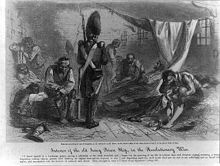Washington County Genealogy, Wills, Estates, Deeds
Washington County was formed by Virginians in 1776 from Fincastle County. It was one of the first counties to be named for George Washington, who was then commander-in-chief of the Continental Army. During 1786 the northwestern portion of the county became Russell County and the remaining western part of the county was combined with parts of Lee and Russell counties to form Scott County in 1814. Then, in 1832 the northeastern part of Washington was combined with part of Wythe County to form Smyth County.
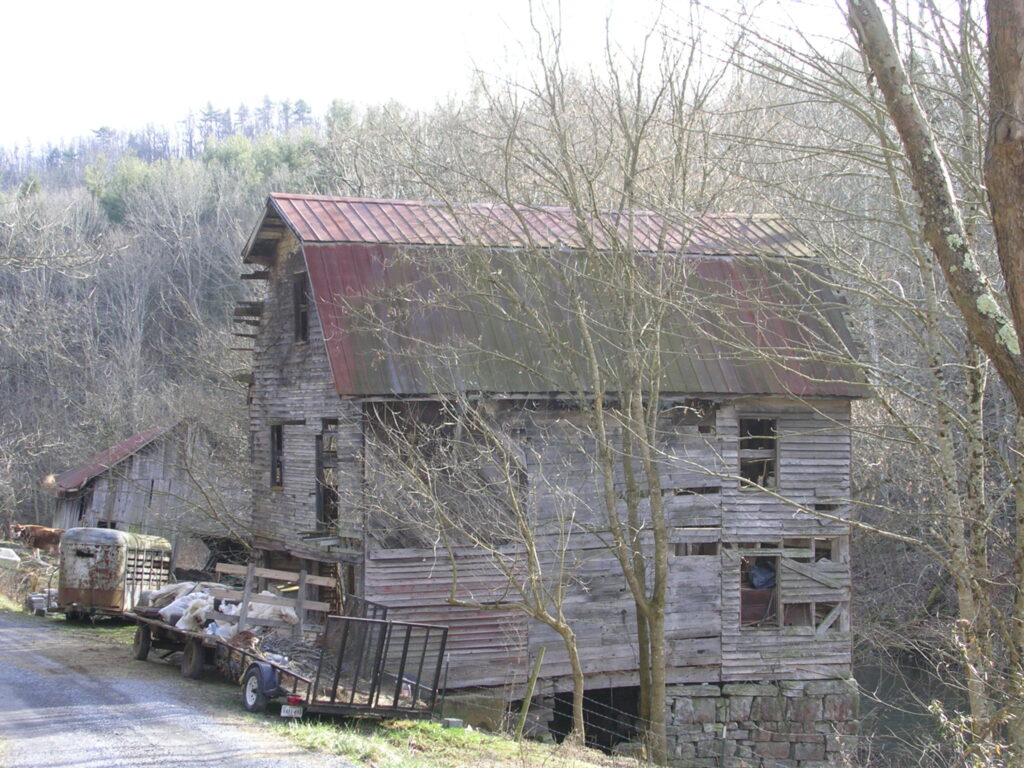
Indexes to Wills, Estates, Deeds
- 1777 to 1791
- 1806 to 1812
Images of Wills, Estates, Deeds 1777 to 1791
Testators: Anderson, Jacob | Atkinson, James | Barksdale, John | Beater, Francis | Beater, John | Bell, Samuel | Berry, James | Berry, William | Blackburn, Arthus | Blackburn, George | Blackburn, William | Blackmore, John | Bowen, Lilly | Brasley, John Sr. | Brooks, Castelton | Brown, Nathaniel | Buchanan, Robert | Buchanan, Samuel | Bush, Josiah | Butcher, Joshua | Campbell, Ann and John Campbell (deed) | Campbell, David | Campbell, John to Thomas Edmondson (deed) | Campbell, Margaret | Campbell, Tom, Captain | Campbell, William | Carr, James | Carr, William | Carswell, Henry | Carter, Charles | Carter, Susanna | Chrisman, Isaac | Christian, Sampson | Coil, James | Cole, Hugh | Cole, Joseph | Cole, William | Colvill, Andrew to Montgomery (deed) | Colvill, Samuel | Cooper, Abraham | Cope, John | Cope, John to Joseph Gray (deed) | Cowen, Samuel | Crabtree, William | Crocket, David | Cross, Benjamin | Cross, Samuel to Joseph Ingleman (deed) | Curry, James | Cusick, John | Darnel, David | De Bel Cour, Lebrun | Dickenson, Humphrey | Dorton, William Sr. | Dryden, Nathaniel | Duncan, John | Duncan, Rawley | Dunlap, Ephraim | Edmiston, John | Edmondson, Robert | Edmondson, William | Edmundson, Andrew | Edwards, David | Estell, Benjamin | Faris, William | Fitzpatrick, John | Forgey, Alexander | Fowler, James | Fowler, Samuel | Frost, Simon to Nathl Nicholas (deed) | Fugate, Francis | Galespy, Robert | Galloway, William | Glenn, James | Graves, Edmund Gray, Benjamin | Green, James | Green, Lewis | Greer, William | Hadden, Thomas | Handlin (deed) | Head, Anthony | Henderson, John | Henry, Samuel | Hill, Thomas | Hilliard, William | Hinnegar, Conrod Hogg to Galgood (deed) | Horn, Leonard Hughes, Samuel | Hughs to Friley (deed) | Jamison, Edward | Jones, Thomas | Kendrick, Solomon | Kendrick, Thomas | Kennedy, John to Jacob Campbell (deed) | Kerr, John | Kincaid, David | Laird, James | Lea, John | Leonard, Peter | Lewis, William | Litten, Bartin Livingston, Henry (deed) | Livingston, William Todd | Locke, Samuel | Logan, Robert | Lyon, Humberston Martin, Joseph | McKee, Alexander | McCormack, James | McCroskey, John | McCullough, Thomas | McReynolds, John | McMurry, Samuel | McNeal, Archibald | Mesenor, George | Mobley, James | Montgomery, Michael | Moore, Alexander | Moses, Mathew | Naul, James | Neal, John M. to George Maxwell (deed) | Newton, David | Newton, Shadrick Pemberton to Pemberton (deed) | Peppers, Elisha | Phillips, James | Rafferty, Thomas | Reaugh, Robert | Ritchie (deed) | Roberts, David | Robertson (bill of sale) | Rogers, John | Rowhatton, Matthew | Saur, Robert | Scott, Archibald | Sharp, Ann to Martin Gassh (deed) | Sharp, Edward | Sharp, John Sr. | Sharp, Thomas | Shea, Derby | Smith, Alexander | Smith, Robin | Smith, Thomas | Smith, Tobias Smith to Robins (deed) | Speddon, Thomas | Stanton, Richard | Stanton, Robert | Starnes, Frederick | Statzer, Martin | Stern, Frederick | Sword, Henry | Thompson, Alexander | Trimble, Moses | Vance, Samuel | Viney, Mary to Adam Hope (deed) | Viney, Mary to William Beattie (deed) | Walker, John | Walker, Samuel | Wason, James | Watson, Patrick | Welder, Matthew | White, Samuel | White, William | Wilkins to Harrison (power of attorney) | Wilson, John | Wood, Archelaus | Wood, Mary | to James Wood (deed) | Woods, John | Yole, John L. | Young, Jacob | Young, James
Wills, Estates, Deeds, 1791 to 1806
Testators: Anderson, Jacob | Andrews, Jacob | Armstrong, Henry | Athy, John | Baker, Isaac | Benham, John | Berry, Francis | Berry, Thomas Sr. | Blackburn, George | Blackburn, William | Bledsoe, Abraham | Boyd to McCaslin (deed) | Breadin to Doyle (deed) | Bready, John (emanicipation) | Brown, Robert | Buchanan, Andrew | Caldwell, William | Campbell, Jacob | Campbell, James | Campbell, William, General Carl, Francis | Carwood, John | Casnor, Henry (deed) | Clarke, William | Coalton, John | Coldwell, William | Cole, Israel | Collen, William | Colvill, Andrew | Colwill, Joseph | Criner, Jones | Denny, Patrick | Dickenson, Henry | Dickenson, Humphrey | Dickerson, Griffey Donaldson, Alexander | Doran, James | Droak to Goodman (deed) | Duff, John | Duff, Samuel | Edmiston, Thomas | Edmiston, William | Edmondson, Thomas (articles) Elder, Mary | Evans, Samuel | Fudge, John | Fugate, Francis | Gilliland, David and Samuel Gilliland, Samuel | Gilleland to Stanton (agreement) | Glenn, James | Gobble, Frederick | Graper, William, Dr. | Gray, Benjamin | Gray, John | Gross, William | Hall, James | Hawkins, John | Hayter, William | Herrald, James | Hill, William | Horling, Edward | Hoyles, William | Jamison, Thomas | Johnson, Elizabeth (articles) | Johnson, John | Johnston, Curtis | Johnston, Hugh | Kendrick, Solomon | Keys, John
Wills, Estates, Deeds, 1806 to 1812
Testators: Agnew, Andrew | Allison, Margaret | Andris, Matthias | Baker, George | Balfour, John | Barron, Hugh | Bean, Ann | Berry, Thomas | Berry, William to James Berry (power of attorney)| Bozeman, Alexander | Bradley, John | Broom, Mary | Brown, Thomas to Samuel Brown (apprentice)| Burns, David | Byrne, James | Caldwell, Robert | Campbell, John | Campbell, William | Campbell, William | Carlock, Kenrod | Carmack, John | Carson, David | Cauley, Thomas | Cawood, John | Cawood, Lucy | Cawood, Stephen | Clark, George | Clark, Mary | Collins, William | Colvin, Mary | Cox, John | Cox, Samuel | Craig, David | Crew, William | Crider, Peter | Crusy, Henry | Cummings, James to Charles Cummings (agreement) | Cummins to Gibson (deed) | Dailey, James to William Byers (deed)| Davidson, Andrew (sale) | Denniston, John | DeSpada, Charles Gabriel Francom Antoine | Dickenson, Archelaus | Dickenson, Sarah | Eakins, Sarah | Edmiston, Rachel Edmiston, Samuel | Edmondson, Moses | Ely, Simon | Fowler, John | Gibson, John to Charles Cummings (deed) | Gibson, John | Gill, Gabriel | Gillenwater, Elijah | Glen, Samuel | Gold, John | Gratner, Outrick | Green, Elizabeth | Gustick, John | Haden, John | Hagarty, John | Hagey, Martin Halton, John | Hamilton, Frederick | Harris, Dabney | Hayton, John | Henry, Elizabeth | Hobbs, Benjamin | Hope, James | Hope, Margaret | Houston, Samuel | Huston, Preston | Huston, Samuel | Hutton, John | Irvine, John Sr. | John, Thomas | Johnson, Snelling | Johnston, Curtis | Kendrick, Elizabeth | Kendrick, John | Kincanon, James | King, James | King, Mary | King, Thomas | King, William | Kregon, Michael | Laughton, James | LeFevre, Alexander | Love, Wilson | Lynard, Henry C. (military discharge)| Lynch, Patrick | Mack, Samuel | Main, Labeus Markland, William | Marshall, Andrew | Martin, Samuel | McCall, Thomas | McCown, John | Meek, Joseph | Meek, Samuel | McMillan, William | McReynolds, John Sr. | Miller, Joseph | Mitchell, James to George Mitchell (deed) | Mitchell, John | Mitchell, Robert | Mitchell, William to Jacob Lyon (deed) | Mobley, James | Montgomery, Robert | Morell, Jacob | Nicks, William E. to John Rice (deed) | Parmen, William | Poston, Richard | Powell, Abed | Preston, Francis and Sarah | Preston, Francis (bond) | Preston, Samuel | Quarles, William | Rambo, Ezekiel | Rhea, W. H. | Richardson, Edward | Ritchey, William | Roseburn, Alexander | Russell, David and John | Ryburn, William | Scott, Bazel | Scott, Samuel Sr. | Scott, William | Shell, Henry | Sherrett, Fincastle (emancipation) | Smith, David | Smith, George | Smock, James | Spangler, George | Sprouter, James | Sprowls, James | Sullins, William | Tate, William | Thompson, Allen to Russell (marriage) Thompson, John | Todd, James | Truelock, Isaac | Vert, James | Warren, George | Warsham, Robert | Wheeler, Oliver | White, William | Wills, Jacob | Wittstick, Thomas | Worsham, Robert Sr. | Wylie, Alexander | Young, John to Jeremiah Evans (deed)
Traced genealogies and family histories of Washington County available to Members !
| Alley | Carson |
Abstracts of Wills
- 1820-1827 (incomplete)
- Marriages 1782-1820
Long Island of the Holston River
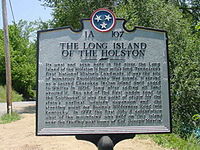
The Battle of Long Island Flats
The last battle of the Cherokees for the continued possession of their favorite hunting ground on the Holston River is detailed in Ramsay’s Annals of Tennessee. The battle occurred on July 20, 1776, about two weeks after the adoption of the Declaration of Independence and the last Indian depredations of Abington. It was the last opportunity to overrun the whole Holston country (now Tennessee) and exterminate the scattered inhabitants. Runners had been sent to all of the Indian towns in Eastern Georgia, Middle and Eastern Tennessee and Western North Carolina, which was the territory belonging to the Cherokee Nation. Reports varied from 700 to 1500 painted warriors who rendevoused for the bloody expedition. The principal chief was “Dragging-Canoe”, whose bravery was thought to equal that of Tucumseh. They met at Long Island in the South Fork of Holston, a short distance above Kingston, Tennessee and six or seven miles from the Virginia line. Dragging-Canoe divided his forces into three divisions and proceeded up a narrow ravine for his attack but he lost a great many of his warriors and retreated. In the Annals of Southwest Virginia, Wilburn Waters reported: “Long Island is now a magnificent farm of several hundred acres, and the whole country is laid off in broad fields, dotted with comfortable homesteads, and teems with an intelligent and thrifty population, most of them descendants of those who reared their rude cabins in the unbroken forest and endured the hardships and dangers incident to pioneer life.”
The Vicious Scalping Near Bush's Fort
During 1770 or 1771 Bush’s Fort was constructed near New Castle, Virginia, about one mile west of “Rock Farm”. It sat upon a spring owned by William R Mead near the later construction of Mud Store, as told by Mr. WIlburn Waters. Mr. Castle built the first log cabin in the region. As the tale goes, a party of seventeen Indians stealthily approached the fort at a time when the men were absent and the only occupants were women and children. A typical work day included leaving the fort to plan corn and other foodstuffs on the newly acquired mountain land and then return home in the evening. Before the Indians arrived at the fort, however, they met up with a young woman by the name of Ann Neece who had gone out for some purpose, and proceeded to scalp her with a tomahawk. Then left her for dead. Then, while the Indians approached the fort to do damage, they were discovered by Simon Oesher, Henry Dickenson and Charles Bickley who happened to be working at a mill nearby. The white men ran towards the fort with the Indians chasing behind. They got safely into the fort through a shower of balls without receiving a scratch, thus literally “running the gauntlet”.
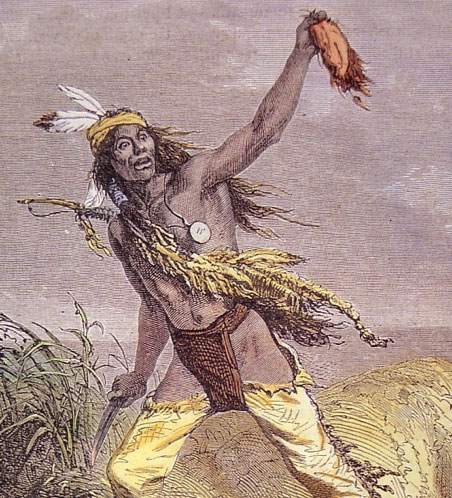
There were only two guns inside the fort and Oesher and Dickenson fired, each killing an Indian. The balance of the savages, knowning nothing concerning the strength of the fort and their guns being empty, hastily picked up their fallen companions and fled into the woods. Some hours later, a bloody Ann Neece was seen as though she had been dipped into a pool of gore, with streams jetting from her head, apparently as numerous as had been the hairs of her head before she was scalped, each jet about the size of a hair. The story ends with her recovering from the experience, of marrying and raising children which left descendants in Russell County. Henry Dickenson was a soldier in the Indian Wars as well as of the Revolutionary War and was at the great battles of Point Pleasant and King’s Mountain. Source: Annals of Southwest Virginia, an account of frontier life by Wilburn Waters.
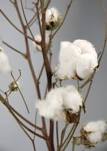
The Story Told by your Ancestors
The Peruke
Are our memories of the past real or have we just made some adjustments in what we’d prefer to remember? Of course we do not remember the age in which we did not live. Yet, we are familiar with horse buggys, Model-T’s and the old-fashioned barbershop on the corner. How is that? There are prompters in our midst, such as monuments of heroes and wars and other events which happened before we were born. Historical homes on display to the public contain remnants of the furniture and personal items of its former occupants, and include oil paintings on the walls of the colonial dress and wigs. Just about every political figure of the past is wearing a white peruke. The wearing of wigs as a fashion was more than that. It was a social necessity. Those were the days of lice, when frequent bathing was considered unhealthy. If that is odd, consider the 1960s when the proper fashions of the day were discarded for baggy pants, unruly hair and tattoos. My generation went from going to school and to a job wearing a dress, coat, hat and gloves to dressing like bums. And, what about the constant chiding of the so-called experts of today concerning the foods which we consume? The judgment is passed upon coffee and cola drinks, automobile emissions, and on and on, even to the point of creating laws against such items in some cities.
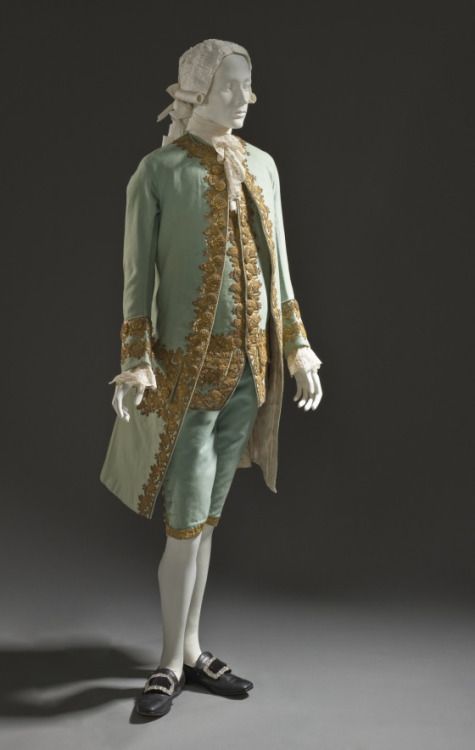
The average colonial who viewed frequent bathing as being unhealthy pales in acerbity compared to the self-professed experts of today. The plantation gentlemen who arose early every morning and rode his horse into the fields to view his crops, wore a turban. Also acceptable was powdered hair. Soldiers received 20 pounds of powder per year. It absorbed the natural oils of the hair. Today that same old talcum is marketed as dry shampoo. There were issues which resulted from not washing daily, like body odors and lice in the hair. During the first half of the 20th century, ringworm was active in the hair of school children.
Colonials were Persons of Letters
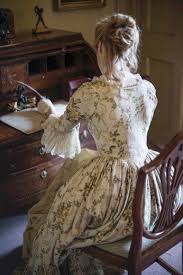
5000 Prisoners Taken by British
